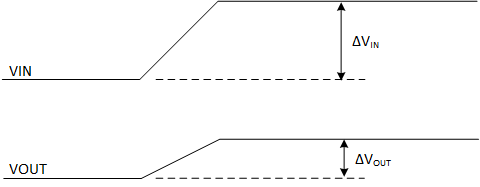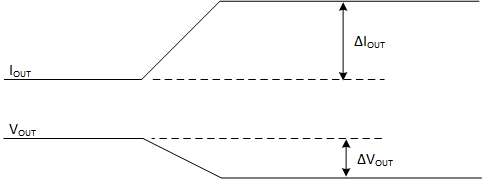SLVSFT8F February 2023 – December 2023 TPS7H1111-SEP , TPS7H1111-SP
PRODUCTION DATA
- 1
- 1 Features
- 2 Applications
- 3 Description
- 4 Device Options Table
- 5 Pin Configuration and Functions
- 6 Specifications
- 7 Parameter Measurement Information
-
8 Detailed Description
- 8.1 Overview
- 8.2 Functional Block Diagram
- 8.3 Feature Description
- 8.4 Device Functional Modes
-
9 Application and Implementation
- 9.1 Application Information
- 9.2 Typical Applications
- 9.3 Capacitors Tested
- 9.4 TID Effects
- 9.5 Power Supply Recommendations
- 9.6 Layout
- 10Device and Documentation Support
- 11Revision History
- 12Mechanical, Packaging, and Orderable Information
Package Options
Refer to the PDF data sheet for device specific package drawings
Mechanical Data (Package|Pins)
- PWP|28
Thermal pad, mechanical data (Package|Pins)
- PWP|28
Orderable Information
7 Parameter Measurement Information

A. ΔVOUT / ΔVIN = 3 µV/V (typ). This means for a 1 V
change in VIN (ΔVIN = 1 V), there will be a 3 µV change in
VOUT (ΔVOUT = 3 µV). Line regulation is a DC
parameter; therefore this waveform should only be considered valid after
transients die out or for a slow VIN slew rate.
Figure 7-1 Line Regulation
A. ΔVOUT / ΔIOUT = 500 µV/A (typ). This means for a 1 A
change in IOUT (ΔIOUT = 1 A), there will be a 500 µV
change in VOUT (ΔVOUT = 500 µV). Load regulation is a DC
parameter; therefore this waveform should only be considered valid after
transients die out or for a slow IOUT slew rate.
Figure 7-2 Load Regulation